How Victor Glemaud's 'Meandering Journey' in Fashion Led to His Label of Joyful Knits
And why Selena Gomez changed everything.
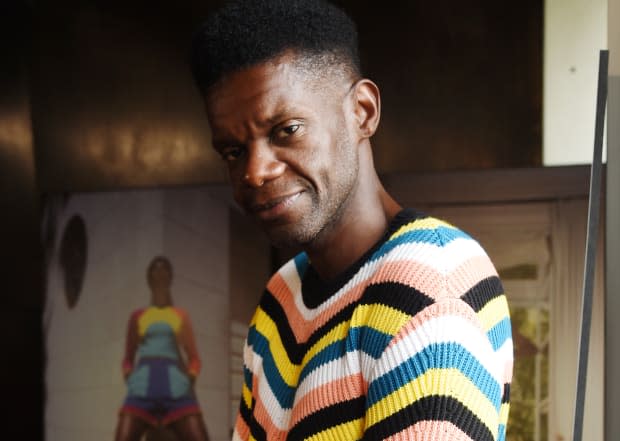
In our long-running series "How I'm Making It," we talk to people making a living in the fashion and beauty industries about how they broke in and found success.
Victor Glemaud is a storyteller — in every way, in every medium. He's best known for design, of course, but he's worn a lot of hats throughout his decades-long career in fashion: He's been a design assistant, a PR representative, a studio director, a consultant and, now, a business owner. That means he has plenty of memories, skills and lessons that he's eager to share.
"Today, more than ever, so many people reach out — they DM, I go to talk to young designers at the CFDA — I'm flabbergasted by the amount that people still don't know," he says. "And I feel like in our industry, a lot of information is very proprietary and no one wants to share or give advice. And I just think we have to, because as accessible as so many people claim to be, they're really not. As a creative, your vision is invaluable, but fashion is a village. There's a lot of people involved in the creation of an item, the selling of it, the promotion of it — no one teaches you that."
Glemaud was born in Haiti, raised in New York and educated all over the world. Every gig has taught him something and shaped him into the designer and businessperson he is today. And he's looking forward for what's still to come.
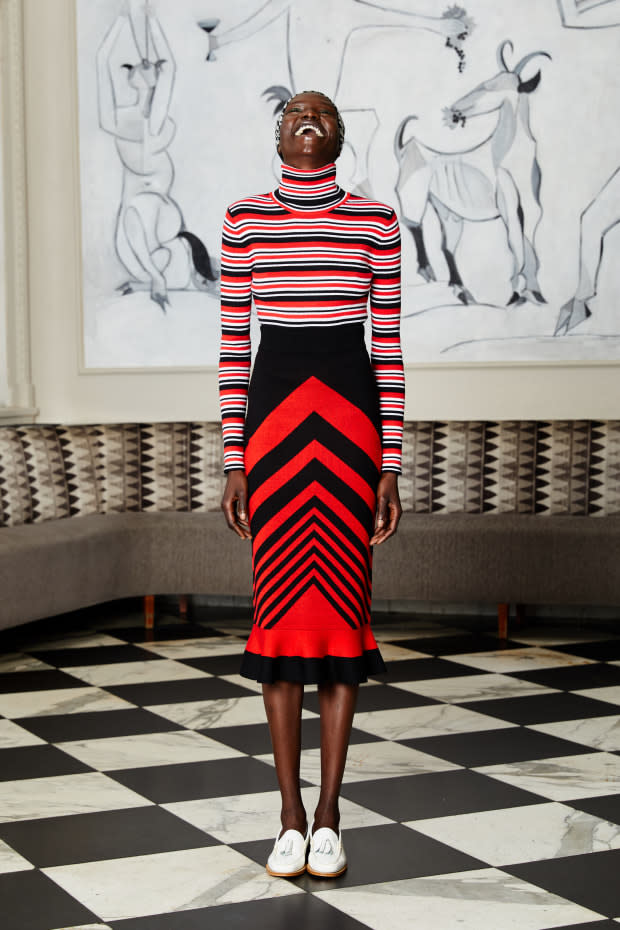
"The biggest challenge that I think all brands are facing is that it's a really tough market. And we're going into an election year — I don't think people are thinking about clothes," he says. "It's about how I navigate that cleverly so I can grow, maintain a good balance sheet and cash flow so I can pay my team and pay myself something. And also be excited by what I do creatively, because if I'm not excited, no one's going to be excited about it. My clothes are joyous and optimistic, so I need to be in it and participate. And we've got some good things coming up. I'm not apprehensive. I'm really excited for 2020 — but with cautious eyes, if you will."
Ahead, read about how Glemaud got his start, what he's learned from his "meandering journey" in fashion, and which celebrity changed everything for his business.
When did you first realize you were interested in fashion?
I always read my sister's magazines — her Elle, her W, her Vogue. It was in high school when I was like, 'I either want to be a chef or I want to go into fashion.' But I also wanted to leave New York. I grew up in Queens, since I was three. So I applied to this school in Providence called Johnson & Wales, which has a culinary arts program, and I also applied to FIT. I got into both, but I went to Providence. And I hated culinary arts — I did not want to be a chef. So I quickly applied for transfer, got back into FIT, and came back to New York. I did not regret going to Providence and trying culinary arts, but I was very certain once I got to FIT this is what I wanted to do.
Once you transferred to FIT, was there anything — any classes or experiences — that confirmed that decision?
I was working checkout at the Dean & DeLuca in SoHo, and I met this designer that I'd read about in the newspaper, Patrick Robinson. I was like, 'I've read about you in the paper, I really like your clothes. I'm studying fashion and I'd love to intern for you.' And he said, 'We don't have any internships coming up, but call the office and see what happens.' I called his office every Friday for six months. Finally, I got through to him, and he's like, 'I don't remember who you are and we can't offer you an internship, but come and work on my show. If we all like you, we can talk.'
I remember my job was to lint-brush the girls' shoes. Gisele and Alek Wek were in the show. I was like, 'Oh my God, this is what I want to do.' That led me to becoming an official intern and that internship led to me becoming a design assistant. I was still at FIT — I was working for him during the day and going to FIT at night and on the weekends. I graduated on time in 2000. I also went out a lot. So I really didn't sleep. It was great.
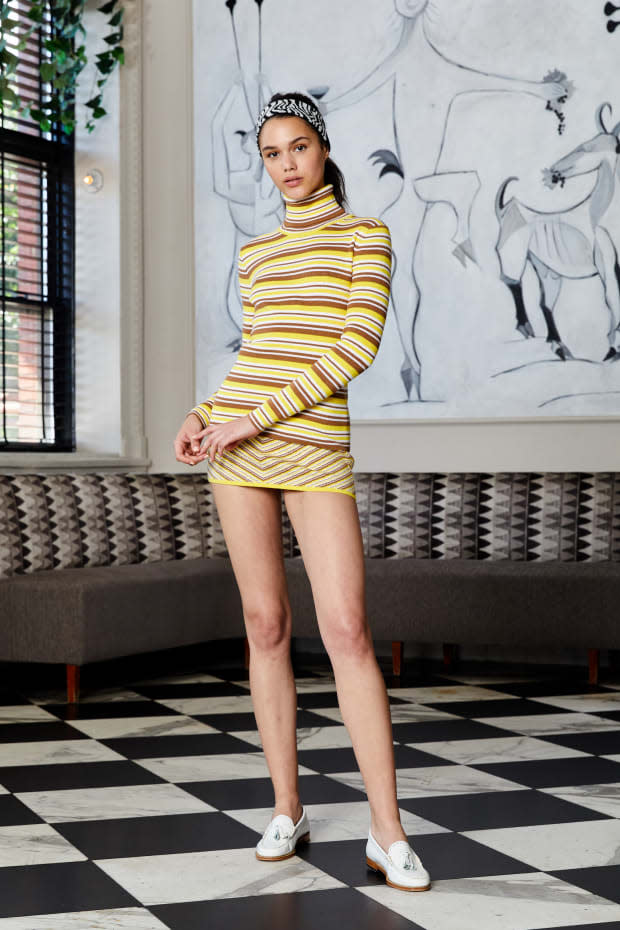
What about that first job sticks with you today?
It taught me on a very small scale about a fashion business. I was an intern, then I was a designer on a very small team. When Patrick wasn't able to do a trunk show, I went to Omaha with the head of sales. It was really about having access to all of the facets of fashion, from sales to the creative, to making the clothes, to the factories, to the atelier. It was really great exposure for someone at 19, 20, 21 years old. And I also learned loyalty because Patrick's always been there for me in my career, and visa versa.
Speaking of all the people that go into making a fashion business, you also worked in PR for some time.
Yeah, my meandering journey. After Patrick I went to work at KCD. Virginia [Smith], his then-girlfriend who was at Calvin Klein at the time and is now his wife and works at Vogue, recommended me. I was carrying a crocodile violin case and a green sweater — I'll never forget my outfit — and it was the middle of summer. By the time I got home [from the interview], there was a message on the answering machine that I had the job.
I worked at KCD for five and a half years. And all the different brands they represented at the time, from Versace with Donatella to Helmut Lang with Helmut Lang — it was so exciting to see the work that was being done in all these different ateliers all over the world and to work on these shows, from men's to couture to ready-to-wear.
I call it my finishing school because it introduced me to all types of clothing construction, from different denim weights at the Gap to the interior construction of a Versace gown. If I went and worked at another place in New York, I would have never experienced and touched and felt those things. It also taught me about the production and the marketing of a show. It introduced me to editors all over the world, to models and model agents, to hair and makeup people backstage. It really introduced me to the fashion industry.
RELATED ARTICLES
How Eva Chen Went From Pre-Med Student to Director of Fashion Partnerships at Instagram
How Fashion PR Ace Rachna Shah Built Her Career From Assistant to Partner at KCD
The Untold Stories of Designers Working Behind the Scenes at Your Favorite Houses
I moved to Paris with KCD. And the timing was completely in sync: Patrick became the artistic director at Paco Rabanne and asked me, 'Do you want to work with me again?' I jumped at the chance and became studio director at Paco Rabanne. I worked there for three years. Living and working in Paris was such an education in terms of making things, the way of the French working versus the American.
When [my time at Paco Rabanne] ended I launched a menswear collection. It was seven looks that I sold to Colette, Beams in Tokyo, Maxfield in L.A. I had this business and I was like, 'Oh shit, what do I do?' So I quickly packed up, moved to New York and started building it from there. I had that for around four years. To fund it, I started working at Tommy Hilfiger as style director, working on runway collections. I learned how to adhere to brand codes, because [Tommy Hilfiger] is global. Also, something Tommy the person taught me is that timing is everything — you can't be too early, you can't be too late. That was my last full-time job.
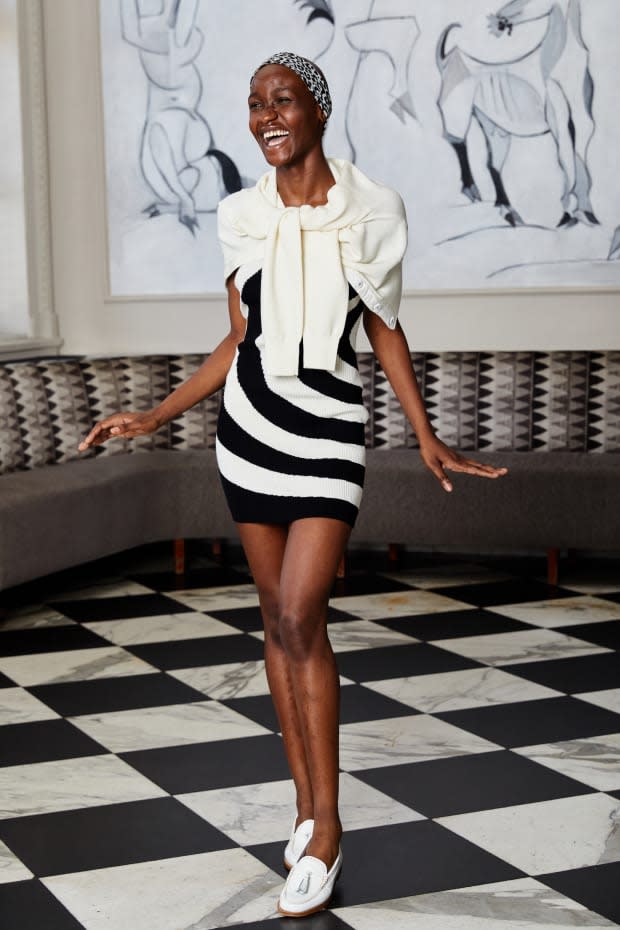
What made you want to eventually relaunch the brand in 2015, with both men's and women's?
After I stopped working at Tommy, I stopped doing [my own brand]. I shipped my last collection and I had what my parents and I now call my Eat, Pray, Love moment: I went to Vietnam, Cambodia and India. I needed to get out of my head, sort of check my ego and just deal with some things — and I couldn't do it in New York. It remains one of the best trips I've ever taken because I processed closing this business and started to think about what I would do next. I came back from that trip and I was like, 'Okay, I have an idea.'
It took me a couple of years to refine it and to have the confidence to launch again. I had to feel like what I was going to reintroduce was challenging and new to me and exciting for the consumer. I had to make sure I had funding to launch and sustain it for a couple of years. I needed to have a new creative viewpoint and message, because it just couldn't be the same thing. What I realized when I was doing men's was that what sold the best and what people liked were the sweaters. So why not do that?
When I came back, I had three sweaters. I didn't want to do any presentations or fashion shows — which now, four years into the new iteration, I'm doing again, but it's still in my way— so we launched it with a street poster campaign and a super fun video for social media. We launched at The Line and they had the exclusive for a year, which gave me time to test the market, the quality and the price. We slowly started launching into wholesale and e-commerce. It built from there to the collection that it is now. And that process would not have happened without, again, my meandering journey, and my being confident about the way I want to do [business].
You first started Victor Glemaud, the label, in 2006. By the time the relaunch came around, a lot about the industry had changed. What were things that you were determined to do differently the second time?
What I wanted to do was really focus on the business strategy. It took me two years to find a factory that was willing, able and interested in doing those slash sweaters at the price I wanted them at. It took me a really long time to find the right yarn that made it work. I wanted to have the proper margin so I could scale this business, and have it be attainable for the consumer. When we do cashmere it gets to around $900, but nothing [in the collection] is ever over $1,000. It's a really versatile, all-season type of knitwear — that’s also a challenge for a lot of people in our industry because they don't understand. They're like, 'What do you sell in the summer?' Well, crochet cotton sweaters; with Pre-Fall, bikinis that people are buying. To me, sweaters are like jeans — you wear them all year round.
Do you think people get it now?
They're starting to. And you know when [they started]? After the CFDA/Vogue Fashion Fund, which I did in 2017. It was a great experience, but it was really hard. It forced me to think about Instagram, which I'm not really good at or think about ever — sorry, Eva Chen. And it made me really refine and think about my business. The idea of incorporating curve sizing into my business, that came out of the Fashion Fund. I dressed Ashley Graham and she looked so beautiful and she was so captivating, I was just like 'Oh, there should be more of this in this collection.'
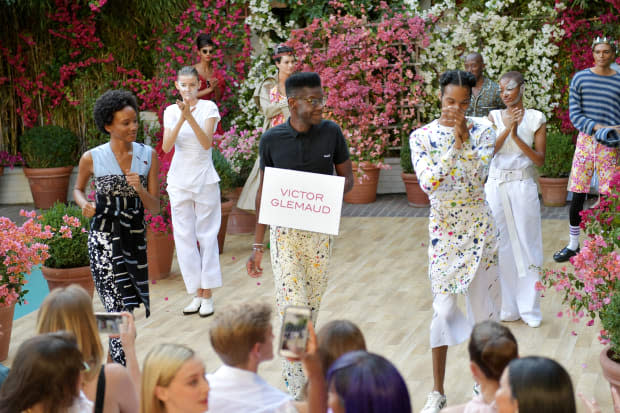
What impact has curve had on your brand and your business?
It has been really great to the business. We sell a large to an extra-large to wholesale and that's considered curve. It's something I can't really promote through my wholesale partners, and that's why it's a focus for my direct-to-consumer business. I can promote it. I can talk about it. I just really find it exciting. What I sell is confidence. The clothes that I do, you see them on a beautiful girl who's an 18, a 22 or on a girl who's a six or a four — it's the same thing.
Another partnership you've had in recent years is with H&M, with their Met Gala looks. Can you tell me a little bit about it?
In sort of broad terms I can talk about it — that's really a consultancy that came about through one of my bosses at KCD who used to be at H&M. They were going to do the Met and they needed some help. I loved doing it and it led to, this year, dressing my first person under my brand: Dominique Jackson. I had no qualms about doing it. I wasn't really nervous, even though it was my first year, because I'd done it before. So to do this with Dominique, I don't want to say it was easy — it was manageable to me. I had a great time, I loved the way she looked and I can't wait for Met 2020.
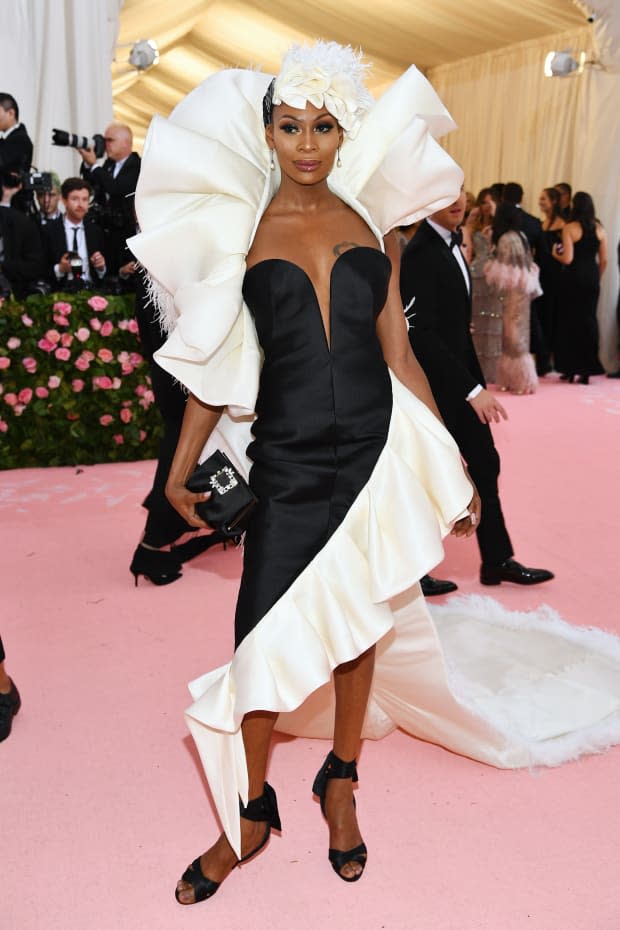
You've mentioned these celebrity moments that have opened a door in your business. Have there been other milestones that have elevated your brand to a larger platform?
Selena Gomez. Selena Gomez. Selena Gomez.
How so?
She wore a red sweater in Vogue's 73 Questions. It went online on Net-a-Porter a few months later and it sold out. I still get tagged on Instagram. It introduced me to a whole global client base. She's worn [the brand] a few times, but that was the first and it was a game-changer. One of my best friends, Kate Young, styles her and I see the impact that it has now more than ever.
What would you say has been the most influential shift that has happened in the industry since you first went out on your own in 2006?
Well that's easy: social media. My former Net-a-Porter buyer found the collection via Instagram — she DM'd me, I sent the collection to her in London and then they ordered something. That would have been impossible in 2006. The way we communicate and the way people learn about a brand are completely different now. Instagram is your business card. I always say, for me, Instagram is information. When I'm doing a trip, I go on Instagram to look at hotels, restaurants and this and that. I think people do the same thing with clothes.
Your brand has aligned itself with folks who have a point of view, and it centers a lot of people who haven't been centered by the fashion industry in the past.
I always love beauty, whatever shape of form it comes in. I always think back to me being that young gay Haitian kid on the train who was obsessed with fashion, who was allowed to express himself and be free and dress the way I wanted and go out and explore a career path that my parents and my family knew nothing about. But they always supported me and were always there for me. That's what I think about when we have opportunities to dress people. I want to do what's new and what's exciting because it should be exciting.
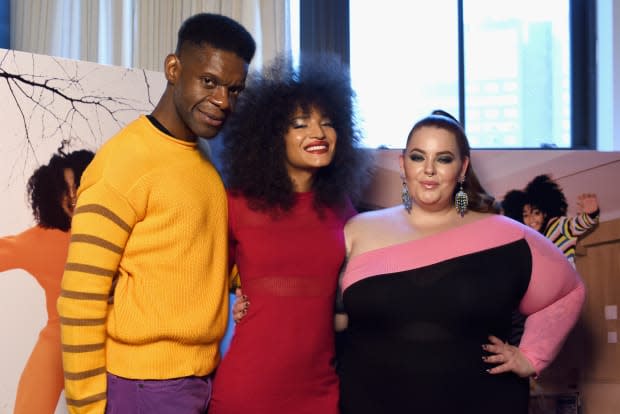
What are the decisions you make as you're building your business to ensure that your brand is inclusive?
To me, it's very instinctual. When I met Indya [Moore], we were passing by each other at the CFDA Awards — we locked eyes, then we came and started chatting with each other. Two nights later, we were sitting next to each other at a gala. From there, I was planning to shoot the Fall 2019 imagery and was introduced to their people. I was like, 'Would you want to do it?' And they came back and said yes. I don't need to ask a panel and get sign-off. I'm confident in the people that I work with. George Cortina always styles everything with me and he's one of my great friends. He told me that Richie Shazam was taking pictures, and Richie has now shot the last few lookbook for us. It's really about trusting the people you work with, liking the things you like and being confident in what you like and don't like. I don't think everything is super, super perfect but I love everything I do. That's what matters.
This interview has been edited and condensed for clarity.
Never miss the latest fashion industry news. Sign up for the Fashionista daily newsletter.
